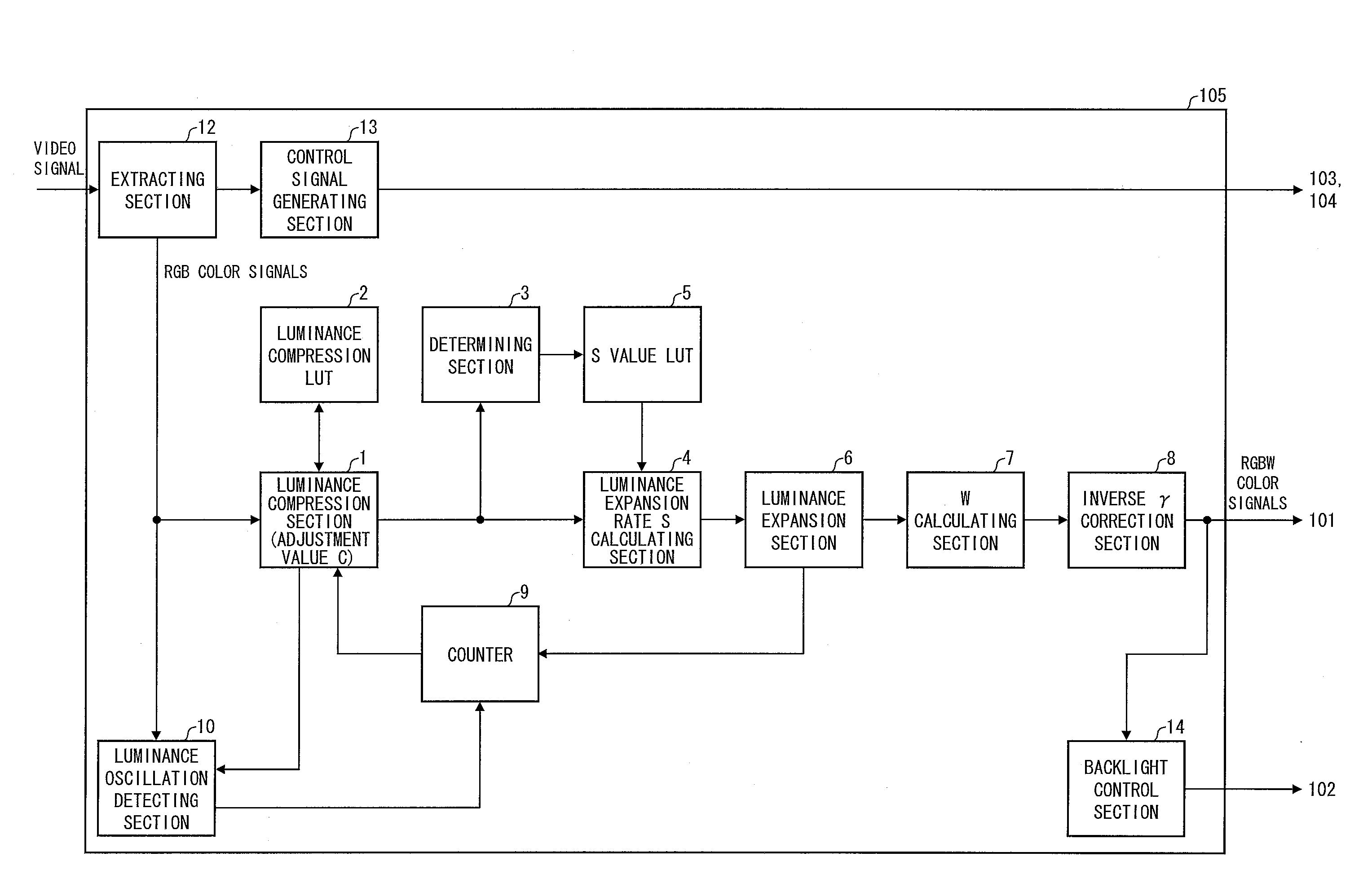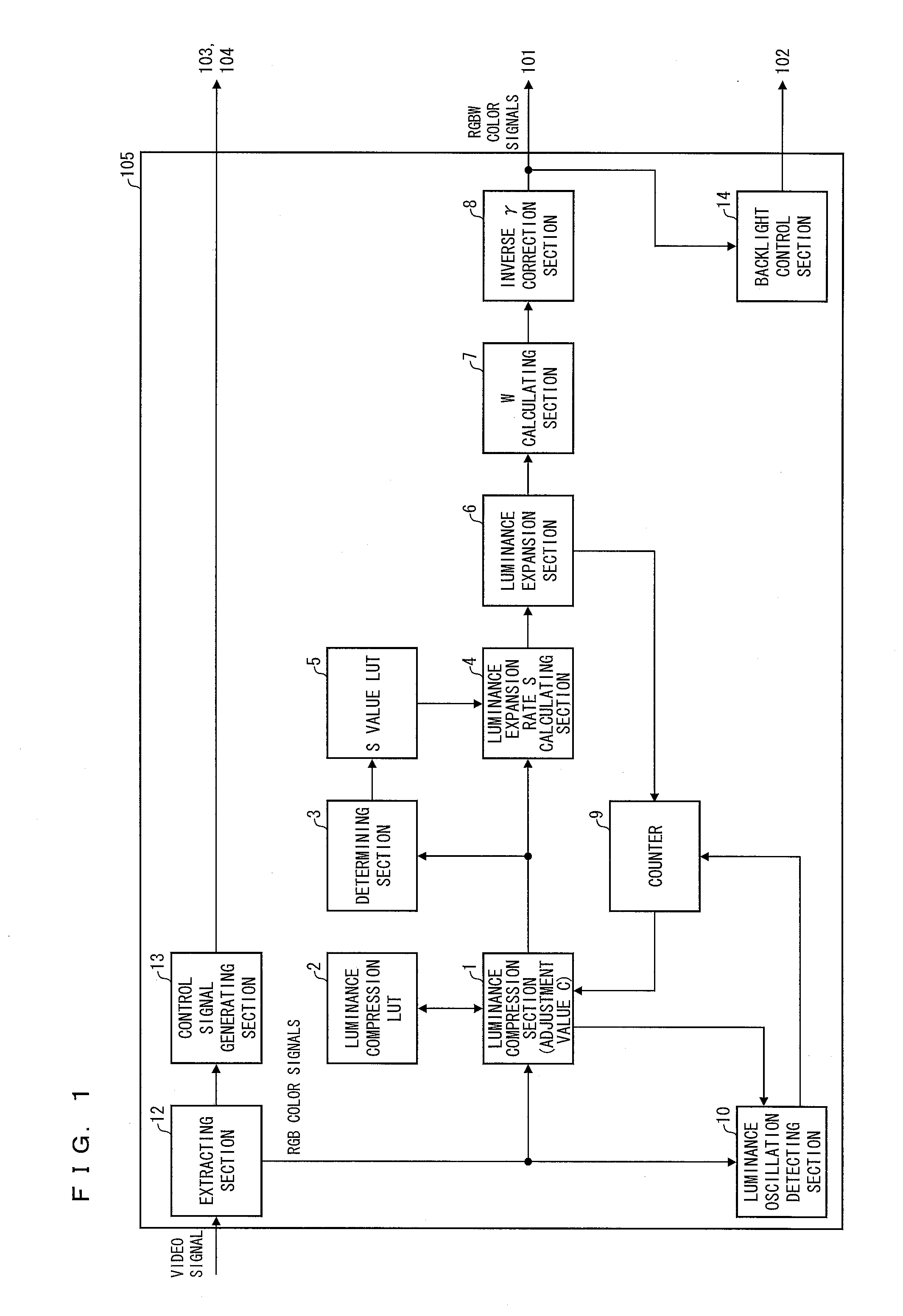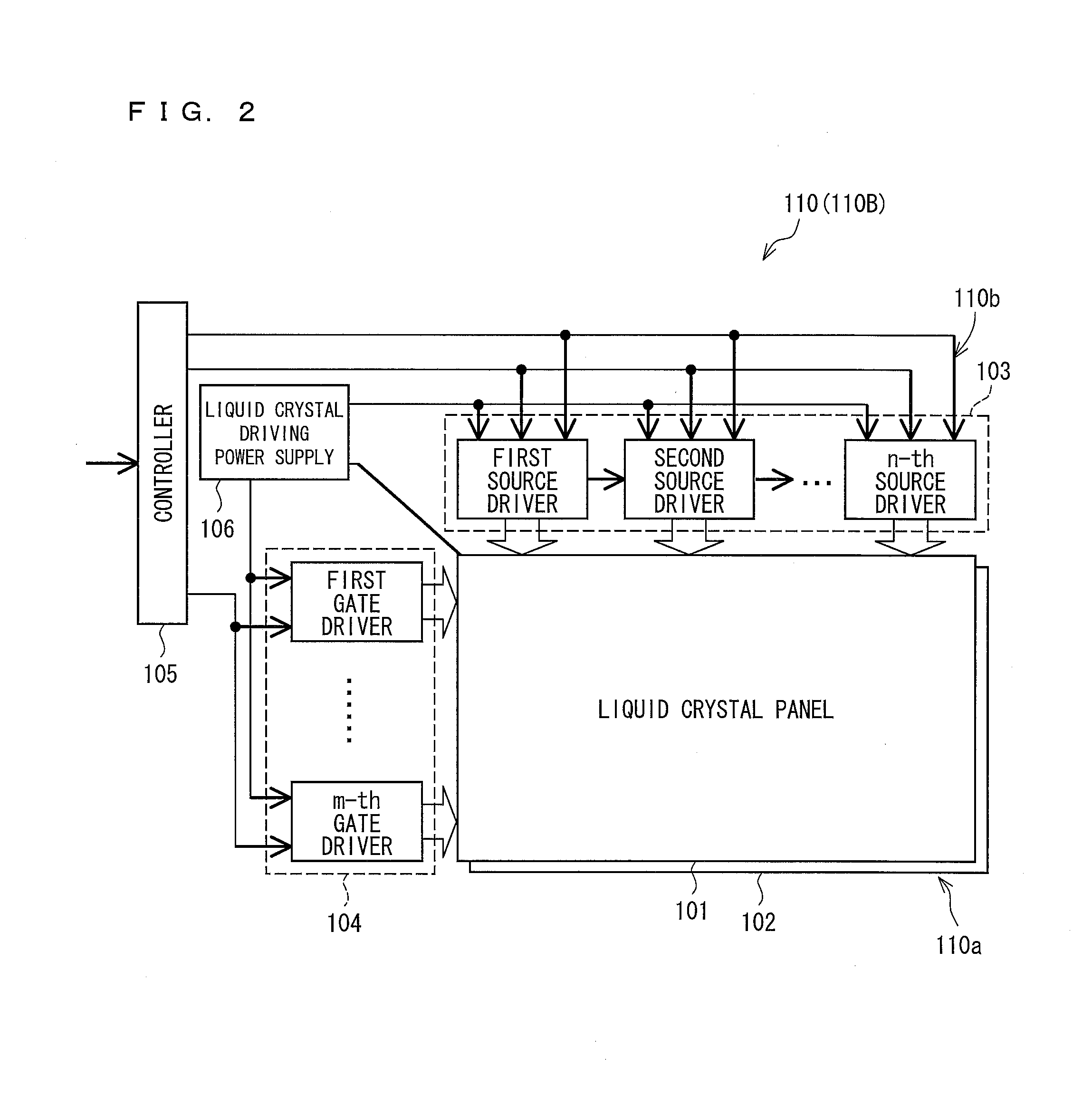Display device and control method for display device
a display device and control method technology, applied in the field of display devices, can solve the problems of (i) a large circuit, (ii) no luminance improvement, and (iii) no luminance improvement, and achieve the effect of preventing the display quality from decreasing
- Summary
- Abstract
- Description
- Claims
- Application Information
AI Technical Summary
Benefits of technology
Problems solved by technology
Method used
Image
Examples
embodiment 1
[0046]The description below deals with one embodiment of a liquid crystal display device as a display device of the present invention with reference to FIGS. 1 through 6.
[0047](Arrangement Description)
[0048]The liquid crystal display device of the present embodiment is arranged as a liquid crystal display device capable of carrying out high-resolution display, for example, an active matrix liquid crystal display device including thin film transistors (hereinafter referred to as “TFTs”) as switching elements.
[0049]The liquid crystal display device of the present embodiment is further arranged as a liquid crystal display device that converts (i) an input image including pixels having a first predetermined number of reference colors (in the present embodiment, the three colors of R [red], G [green], and B [blue]) into (ii) a converted image including pixels having a second predetermined number of reference colors (in the present embodiment, the four colors of R [red], G [green], B [blu...
embodiment 2
[0187]The present embodiment describes a liquid crystal display device 110B that is identical in arrangement to the liquid crystal display device of Embodiment 1 except that the liquid crystal display device 110B includes a backlight control section 14B and a luminance oscillation detecting section 10B each of which carries out processing different from that carried out by its corresponding member in Embodiment 1. The description below deals in detail with the present embodiment with reference to FIG. 8. The description below assigns, to any constituent element of the present embodiment which constituent element is identical to a corresponding constituent element of Embodiment 1, a reference numeral identical to that assigned to the corresponding constituent element, and does not deal with such identical constituent elements. The description below mainly deals with constituent elements of the present embodiment that are not included in Embodiment 1.
[0188]The backlight control sectio...
PUM
 Login to View More
Login to View More Abstract
Description
Claims
Application Information
 Login to View More
Login to View More - R&D
- Intellectual Property
- Life Sciences
- Materials
- Tech Scout
- Unparalleled Data Quality
- Higher Quality Content
- 60% Fewer Hallucinations
Browse by: Latest US Patents, China's latest patents, Technical Efficacy Thesaurus, Application Domain, Technology Topic, Popular Technical Reports.
© 2025 PatSnap. All rights reserved.Legal|Privacy policy|Modern Slavery Act Transparency Statement|Sitemap|About US| Contact US: help@patsnap.com



